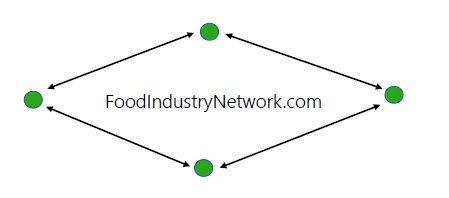How the Ice Age’s impact on subsoils guides topsoil management today

To reach the soil’s geology, you need to dig deep, but its impact on production is closer to the surface.
For farmers, soil specialists or people in between, there was nothing more intriguing than the soil pit at the Harnessing the Power of Soil Health at the Grand River Raceway in July.
Why it matters: Soil management and geological awareness contribute to soil healeesth and reveal that organic matter alone can’t solve field issues.
Ted Taylor, a soil specialist with SRG, provided a geological timeline for the Grand River Agricultural Society’s field, explaining that glacial sheets from northern Ontario, Georgian Bay and lakes Huron, Erie and Ontario met in the area.
“It moved all the material into a spot that kind of centres almost where we are right now,” he said.
The glaciers were nearly two miles thick, and in addition to pushing, scraping and moving any material in their path to a centre point, they also pushed down the tectonic plates before they began melting.
As they melted, lakes were left behind where clay settled in the deep waters, and sand and gravel deposits formed banks and shorelines, said Taylor.
“The Grand River is a spillway where meltwater flowed at extremely high velocities and dropped material that was the size of cobbles, small stone with a lot of gravels as well,” he said.
“Anybody familiar with Highway 3 and all the gravel deposits around there? We’re talking about an old beach line.”
Taylor said much of the material dropped by the glacier, called till, would be compacted at depth, usually below a metre, but not at the surface.
Despite glacial melt, the temperatures and fierce winds would have mimicked Antarctic conditions. This process dried the land but also blew the loess, consisting of very fine sand and silt, and medium-sized, high-water-holding-capacity materials, which impacted the foundation of soils, said Taylor.
Till is generally a mixture of rich sand, silt and clay, often clay loam or sandy loam soils with stones.
“There are some really nice soils on top, but if this is the material down below and you’re wondering why have I got four per cent organic matter and these crops do really well in a normal year, but this year, they’re dead?” asked Taylor. “It’s because you’ve got this below. The water has nowhere else to go except down.”
Land with loess, which is silty and holds water exceptionally well, can easily grow trees.
“Geology is the foundation of soils. The properties you look at in a pit are mostly based on the geological material those soils were developed upon,” Taylor said. “You could have the best-managed soil in the world but if your soil is inherently a challenge, soil health will only help it so far.”
Just under the horizon
From his stance in the pit, Jim Warren, soil chemist for the Ontario Ministry of Agriculture, Food and Rural Affairs, pointed to different soil horizons defined by a linear string map, a vertical measurement tape and a name tag for each horizon using scientific nomenclature that identifies the properties of each horizon, such as Ap for the topsoil, followed by Ae, Bm, Aegj, Btgj and Ckgj.
Warren said a build-up of organic matter and water moved finer particles like clay from the A-horizon down into the B-horizon. If the organic matter wasn’t present, the soil would be white, a trait often reflected in the Ae horizon.
Organic acids are added with the organic matter when there is movement of iron in the B-horizon, creating an accumulation of iron and clay.
Before tilling, most A horizons were about 10 to 15 centimetres deep, but at some point in the last 50 years, the field was tilled to approximately 20 cm, which introduced material from the B horizon into the upper horizon.
The Ae horizon has little nutrient ability and the B horizon contains iron, which should not be introduced to topsoil.
“Iron just loves phosphorus, so by incorporating this material into your topsoil and mixing it in with it, you’re actually eating up dollars in phosphorus fertilizer.”
Warren indicated an area where para-glacial conditions formed three distinct and narrow V-shaped wedges downward from the B horizon at approximately 58 to 95 cm.
“Under para-glacial, in other words near glacial condition where there was no ice but you still had permafrost here, it formed these big cracks where you get material moving down into the deeper areas.”
Warren noted the pit was in the field’s headlands, where heavy machinery caused compaction. As a result, there was virtually no structure at the top but a massive structure at the bottom impeding water infiltration.
Taylor said soil management is essential, but don’t expect miracles in a mix of wet clay, dry gravel, shell and bedrock.
“We just want to appreciate where soils come from and that they’re always a factor when trying to improve soil quality,” said Taylor. “And there are some times where soil management, soil health won’t necessarily improve something inherently difficult to manage.”
Source: Farmtario.com

